
Project development
Erat, sed diam voluptua. Consetetur sadi pscing elitr, sed diam nonumy eirmod Erat, sed diam voluptua. At vero eos et accusam et justo.
Project developmentErat, sed diam voluptua. Consetetur sadi pscing elitr, sed diam nonumy eirmod Erat, sed diam voluptua. At vero eos et accusam et justo.
Textile waste water treatment technology
The characteristics of textile wastewater of vary over wide range and now the treatment system has to be tailored made to suit each individual unit. Possibility of having a standard treatment plant design for textile wastewater. The research findings are being implemented.
Sodium chloride and sodium sulphate are used in the dyeing process as catalyst. 99% salt is discharged into the wastewater treatment plant. Development work has been done on lab scale to purify and reuse the common salt back in process. The advantage of reuse salt are
- (a) Pure salt can be obtained for dyeing and eliminate the fabric defects due to the presence of the impurities in the salt.
- (b) The reuse of salt in the process will reduce TDS in the treated water. The brine treatment is a useful method of hardness of the water is removed retaining the sodium chloride for the dye process. The chemical composition of the brine is relatively high in magnesium and sulphate salts.
The raw brine in addition to sodium chloride contains dissolved Ca and Mg salts which are precipitated through the lime soda process. The precipitation is made in two stages.
The first stage uses Ca(OH)2 and the second Na2CO3. The Na2CO3 consumption is reduced by transforming the NaOH in solution to Na2CO3 with CO2 gas. For sulphate, BaCl2 is used. The process yields free Ca and Mg salts retaining NaCl needed for dye exhaustion.
Large quantity of sludge is generated in an effluent treatment plant of textile dye house. Treatment, storage and disposal of the solid waste is one of the difficult tasks in the operation of ETP Research & Development is done on this line. To minimize solid waste generation by use of chemicals which will substitute lime and ferrous sulphate. Polymer does not produce sludge. The sludge thus stored has been converted as a soil conditioner. Commercial level of handling huge quantity of sludge involves cost. Hence an alternative is using polymer for treatment
The characteristics of treated wastewater using DK salt is as follows. It is also recommended that this treated water can be used as feed water to RO plant. Future line of research is using the reject of desaline for textile.
Brine Recipe vs Dye Recipe
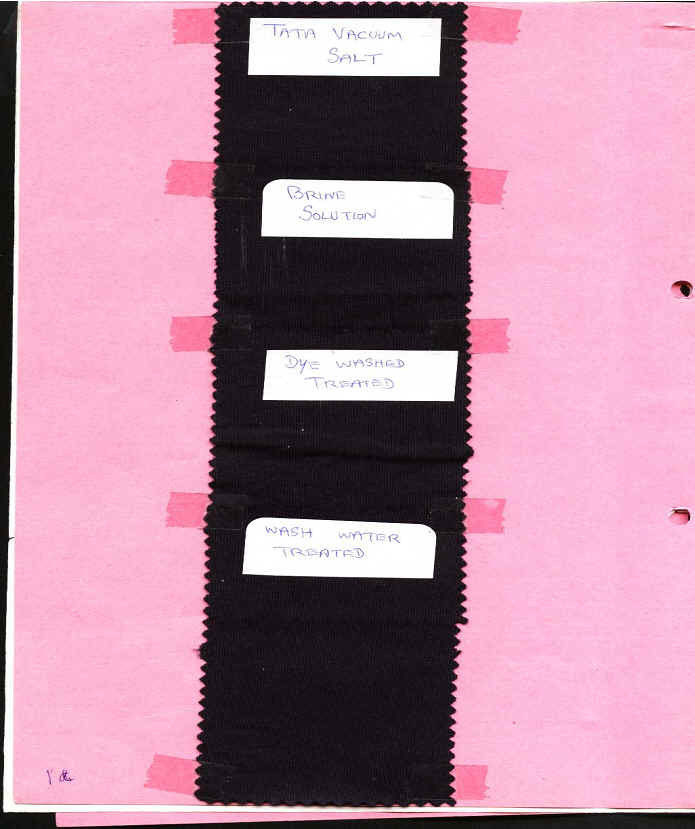
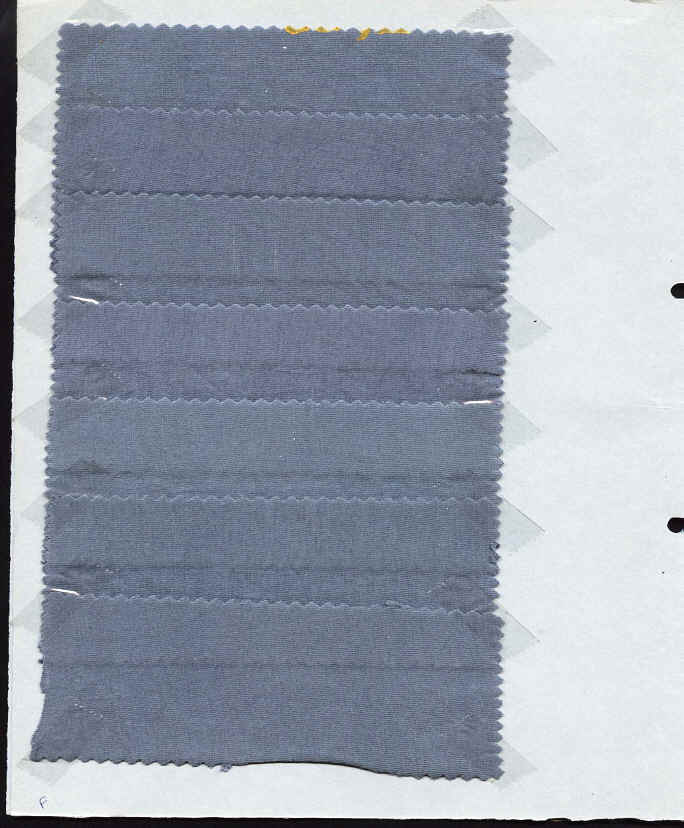
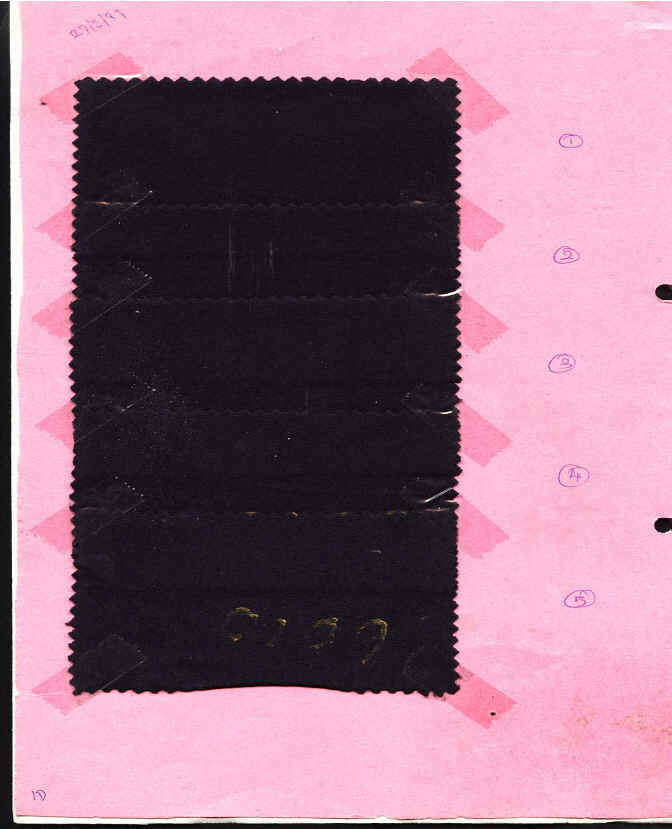
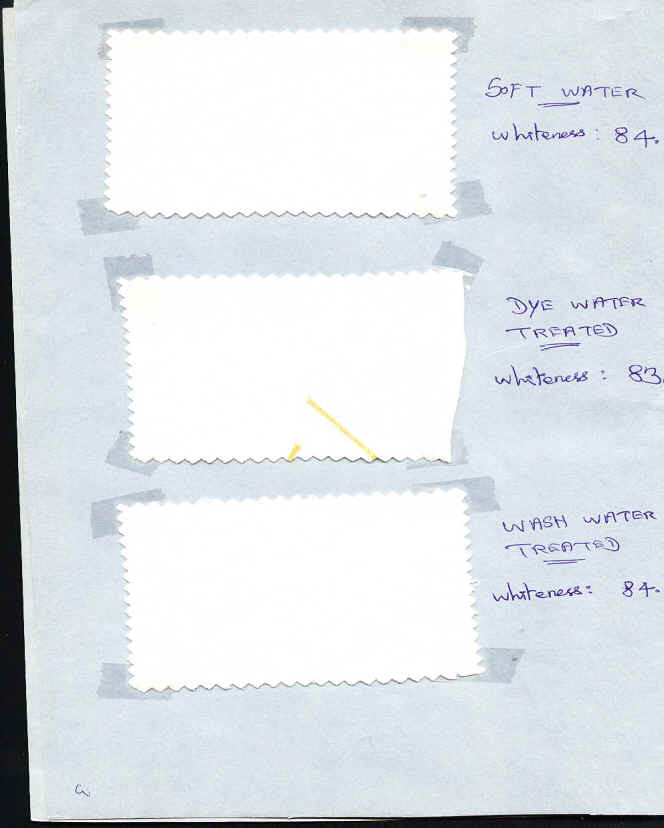
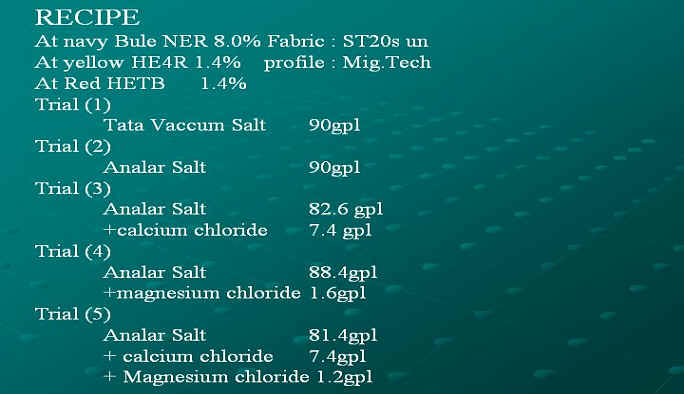
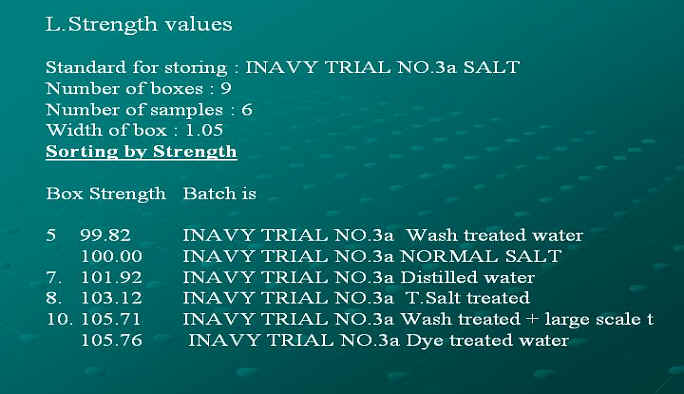
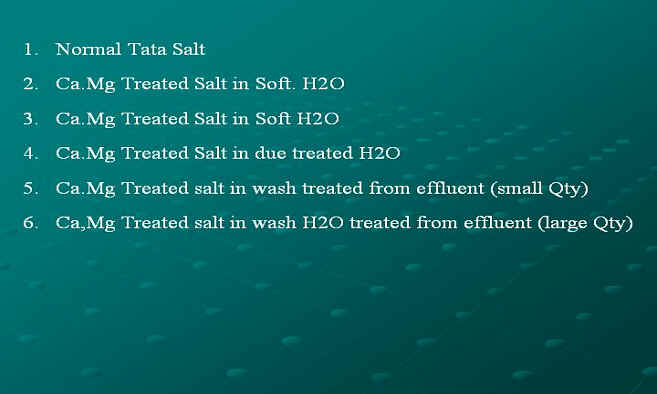
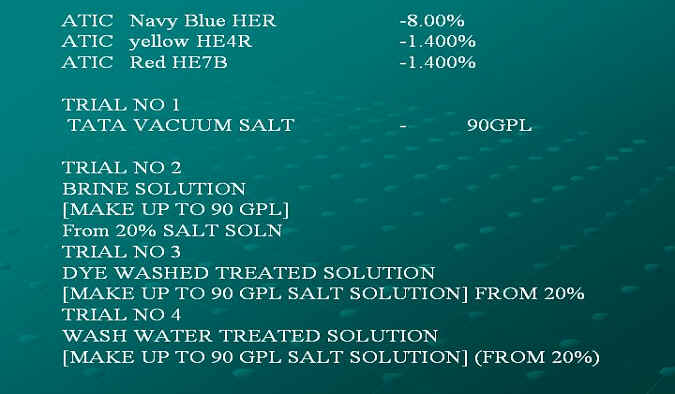
Natural dye - Waste water
Handmade paper - Waste water
Copyright 2005 @ wasterecycleinfo.com A StudioFx creation